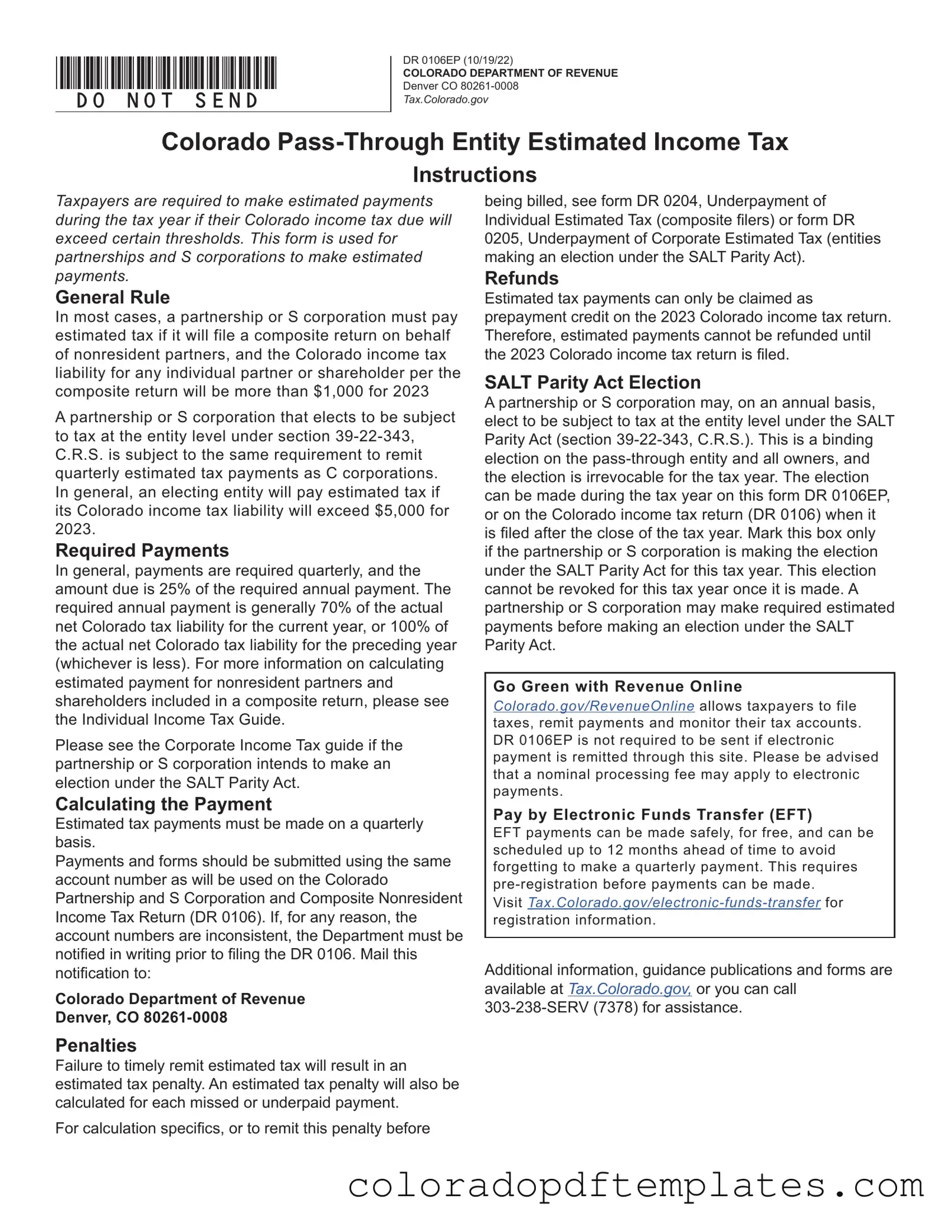The Colorado DR 0106EP form is a worksheet used for making estimated tax payments for nonresident individuals who are included in a composite filing. This form helps individuals calculate their estimated tax liability for the year based on their expected Colorado-source income.
This form is specifically for nonresident individuals who expect to owe more than $1,000 in Colorado tax after accounting for any withholding or refundable credits. If you are part of a composite return, you will need to file this form to make your estimated tax payments.
To calculate your estimated tax, you will follow these steps:
-
Estimate your Colorado taxable income for the year.
-
Multiply that amount by the Colorado tax rate of 4.63% to determine your estimated tax.
-
Subtract any credits you expect to claim from your estimated tax to find your net estimated tax.
Make sure to complete this process for each individual included in the composite return.
Payments are typically due on the following dates:
-
April 15
-
June 15
-
September 15
-
January 15 of the following year
It’s important to submit your payments by these dates to avoid penalties.
What happens if I miss a payment deadline?
If you miss a payment deadline, you may incur an Estimated Tax Penalty. The penalty applies to each missed or late payment. However, exceptions exist for farmers and fishermen who file and remit full payment by March 1.
Can I get a refund for my estimated tax payments?
Unfortunately, estimated tax payments cannot be refunded until you file your Colorado income tax return. Once your return is filed, you can claim these payments as a prepayment credit against your total tax liability.
How can I make my estimated tax payments?
You can make your payments by sending a check or money order along with the DR 0106EP form to the Colorado Department of Revenue. If you prefer, electronic payments can also be made, which is recommended to avoid potential issues or delays.
No, if you make your estimated tax payments electronically through the Colorado Department of Revenue's website, you do not need to file the DR 0106EP form. This helps streamline the process and saves time.
For additional information, you can visit the Colorado Department of Revenue's website at www.TaxColorado.com. You can also call their assistance line at 303-238-SERV (7378) for any specific questions or concerns.
